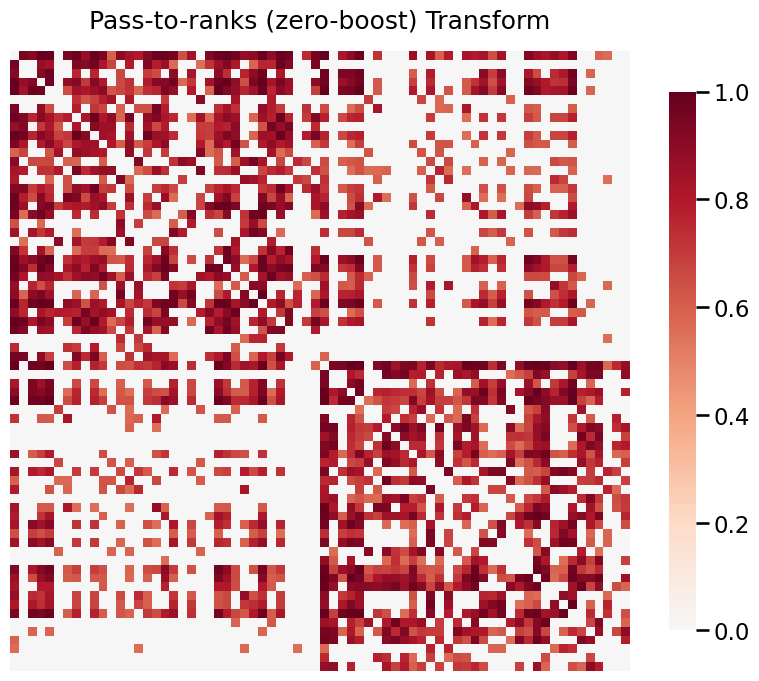Heatmap: Visualizing a Graph¶
This example shows how to visualize graphs using a heatmap.
[1]:
import graspologic
import numpy as np
/home/runner/work/graspologic/graspologic/.venv/lib/python3.10/site-packages/tqdm/auto.py:21: TqdmWarning: IProgress not found. Please update jupyter and ipywidgets. See https://ipywidgets.readthedocs.io/en/stable/user_install.html
from .autonotebook import tqdm as notebook_tqdm
Plotting Simple Graphs using heatmap¶
A 2-block Stochastic Block Model is defined as below:
\begin{align*} P = \begin{bmatrix}0.8 & 0.2 \\ 0.2 & 0.8 \end{bmatrix} \end{align*}
In simple cases, the model is unweighted. Below, we plot an unweighted SBM.
[2]:
from graspologic.simulations import sbm
from graspologic.plot import heatmap
n_communities = [50, 50]
p = [[0.8, 0.2],
[0.2, 0.8]]
A, labels = sbm(n_communities, p, return_labels=True)
heatmap(A, title="Basic Heatmap function");
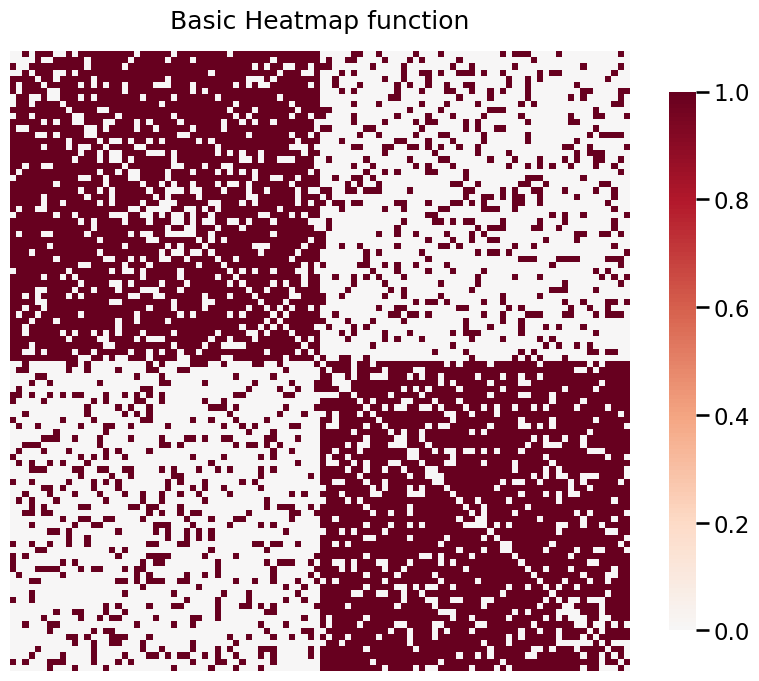
Plotting with Hierarchy Labels¶
If we have labels, we can use them to show communities on a Heatmap.
[3]:
heatmap(A, inner_hier_labels=labels)
[3]:
<Axes: >
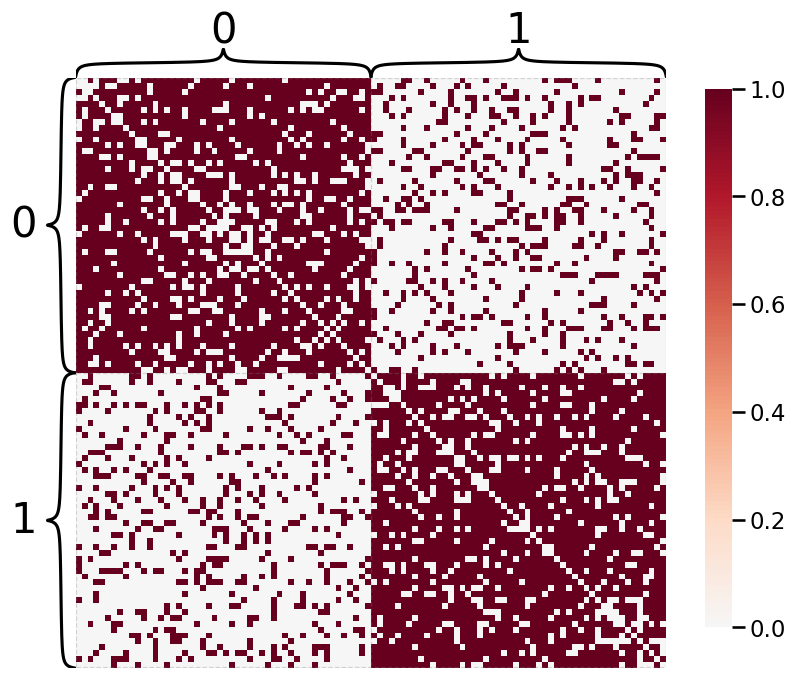
We can plot outer hierarchy labels in addition to inner hierarchy labels.
[4]:
outer_labels = ["Outer Labels"] * 100
heatmap(A, inner_hier_labels=labels,
outer_hier_labels=outer_labels)
[4]:
<Axes: >

Weighted SBMs¶
We can also use heatmap when our graph is weighted. Here, we generate two weighted SBMs where the weights are distributed from a Poisson(3) and Normal(5, 1).
[5]:
# Draw weights from a Poisson(3) distribution
wt = np.random.poisson
wtargs = dict(lam=3)
A_poisson= sbm(n_communities, p, wt=wt, wtargs=wtargs)
# Plot
title = 'Weighted Stochastic Block Model with \n weights drawn from a Poisson(3) distribution'
fig= heatmap(A_poisson, title=title)
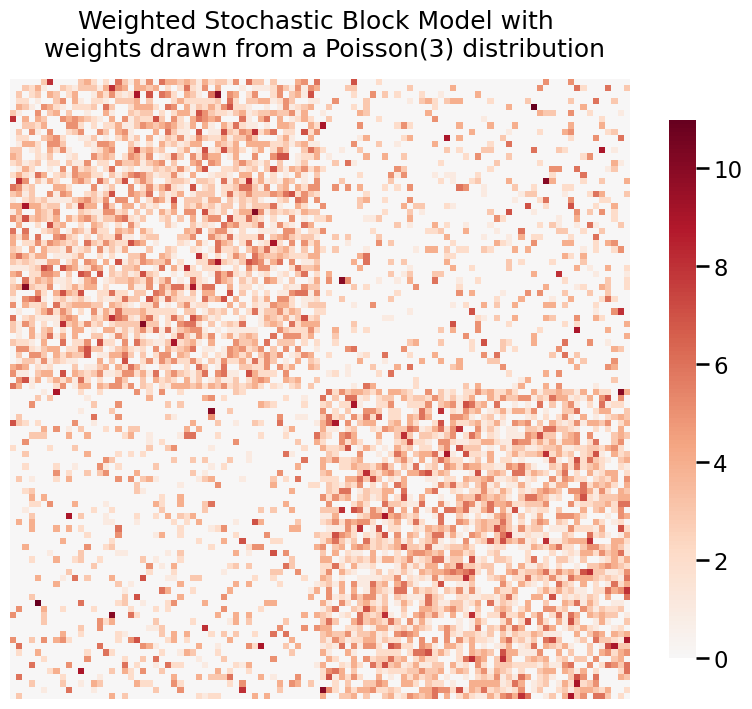
[6]:
# Draw weights from a Normal(5, 1) distribution
wt = np.random.normal
wtargs = dict(loc=5, scale=1)
A_normal = sbm(n_communities, p, wt=wt, wtargs=wtargs)
# Plot
title = 'Weighted Stochastic Block Model with \n weights drawn from a Normal(5, 1) distribution'
fig = heatmap(A_normal, title=title)
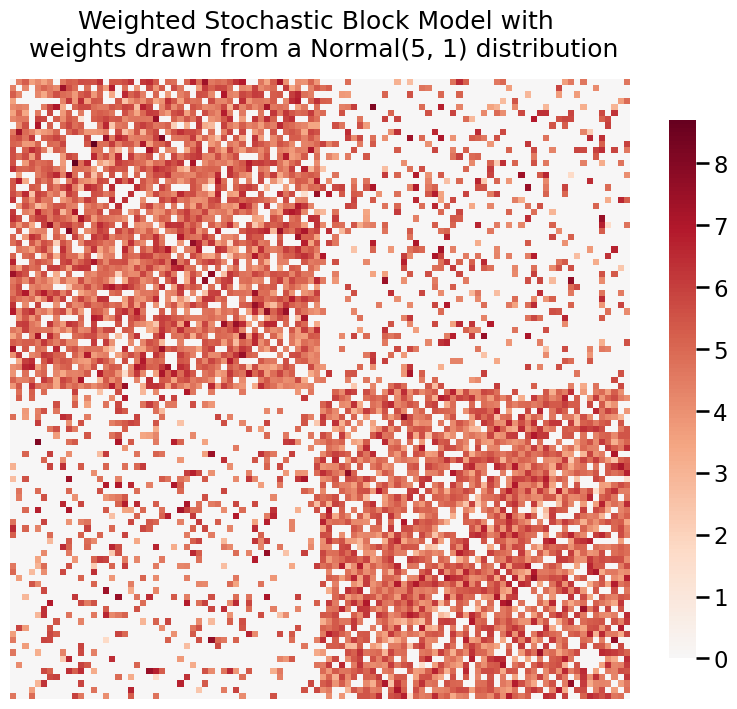
Colormaps¶
You can change colormaps. See here for a list of colormaps.
[7]:
title = 'Weighted Stochastic Block Model with Poisson(3)'
fig = heatmap(A_poisson, title=title, transform=None, cmap="binary", center=None)
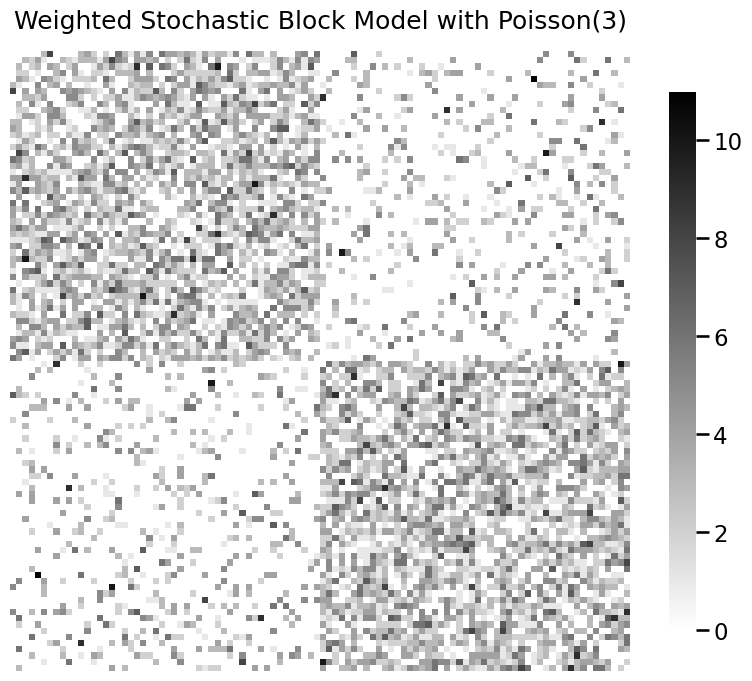
Data transformations¶
When your graphs have values that span a large range, it is often useful to transform the data in order to visualize it properly. Below, we use a real graph which is estimated from the a structural MRI scan. The data is provided by HNU1.
The data ranges from 0 to 44813, and visualizing without a transformation will emphasize the large weights. Both log and pass-to-ranks transforms provide better visualizations of the graph.
[8]:
G = np.load('./data/sub-0025427_ses-1_dwi_desikan.npy')
print((np.min(G), np.max(G)))
(0.0, 44813.0)
Without transform¶
[9]:
title = 'Without Transformation'
fig= heatmap(G, title=title, transform=None)
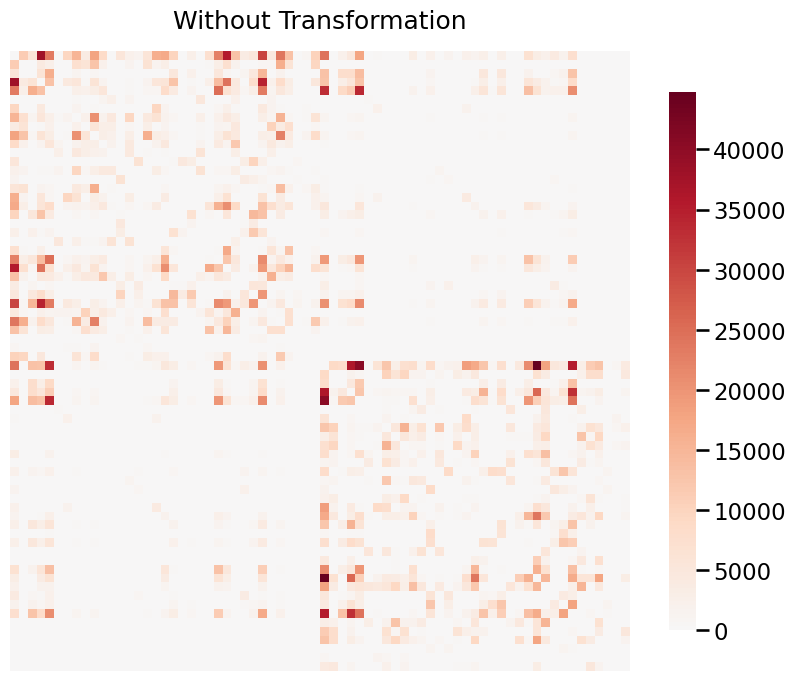
With log transform¶
[10]:
title = 'Log Transform'
fig= heatmap(G, title=title, transform='log')
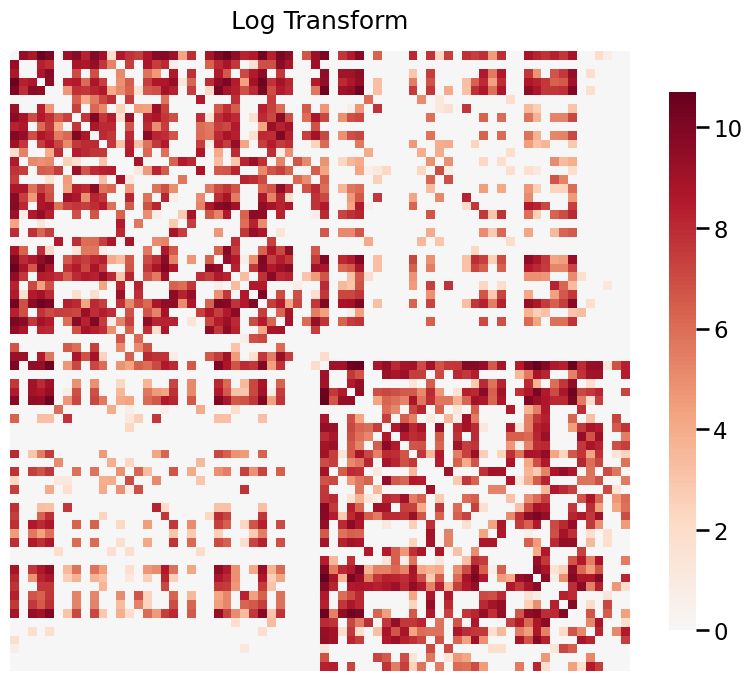
With pass to ranks¶
[11]:
title = 'Pass-to-ranks (zero-boost) Transform'
fig= heatmap(G, title=title, transform='zero-boost')
